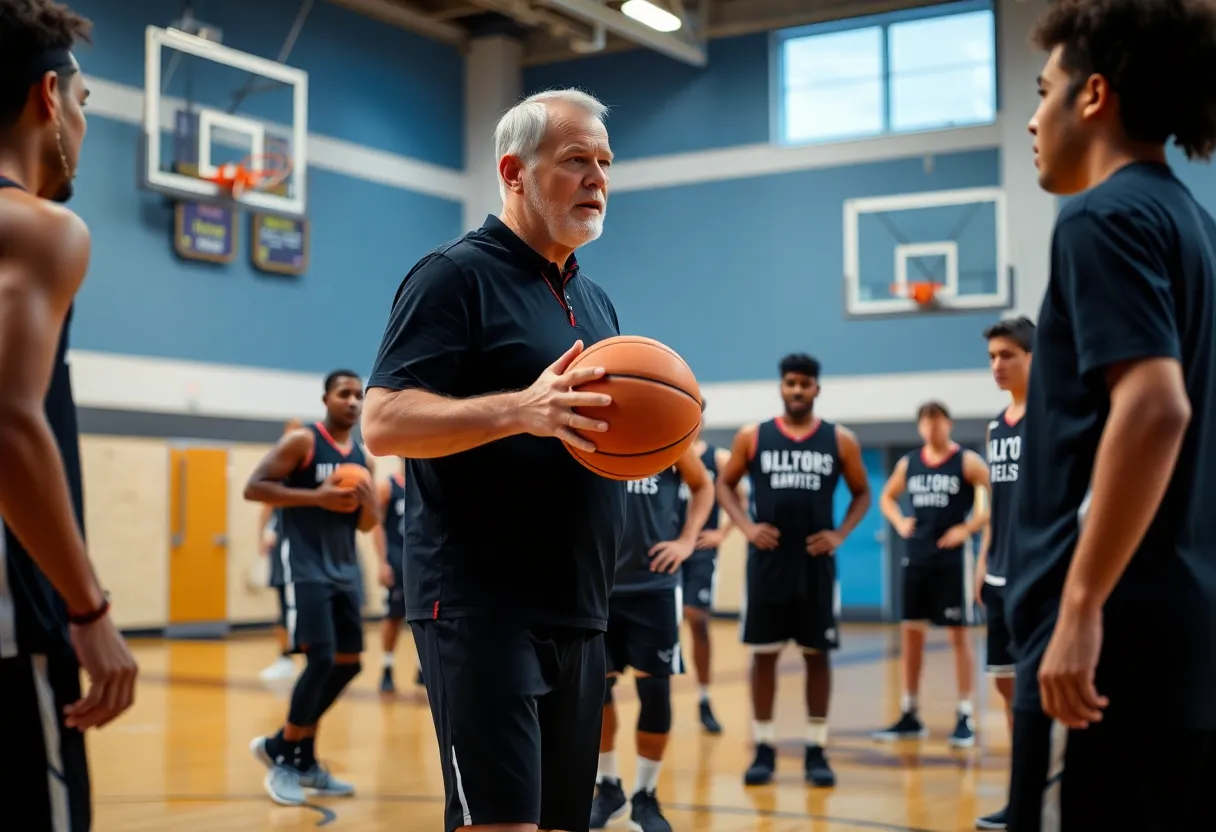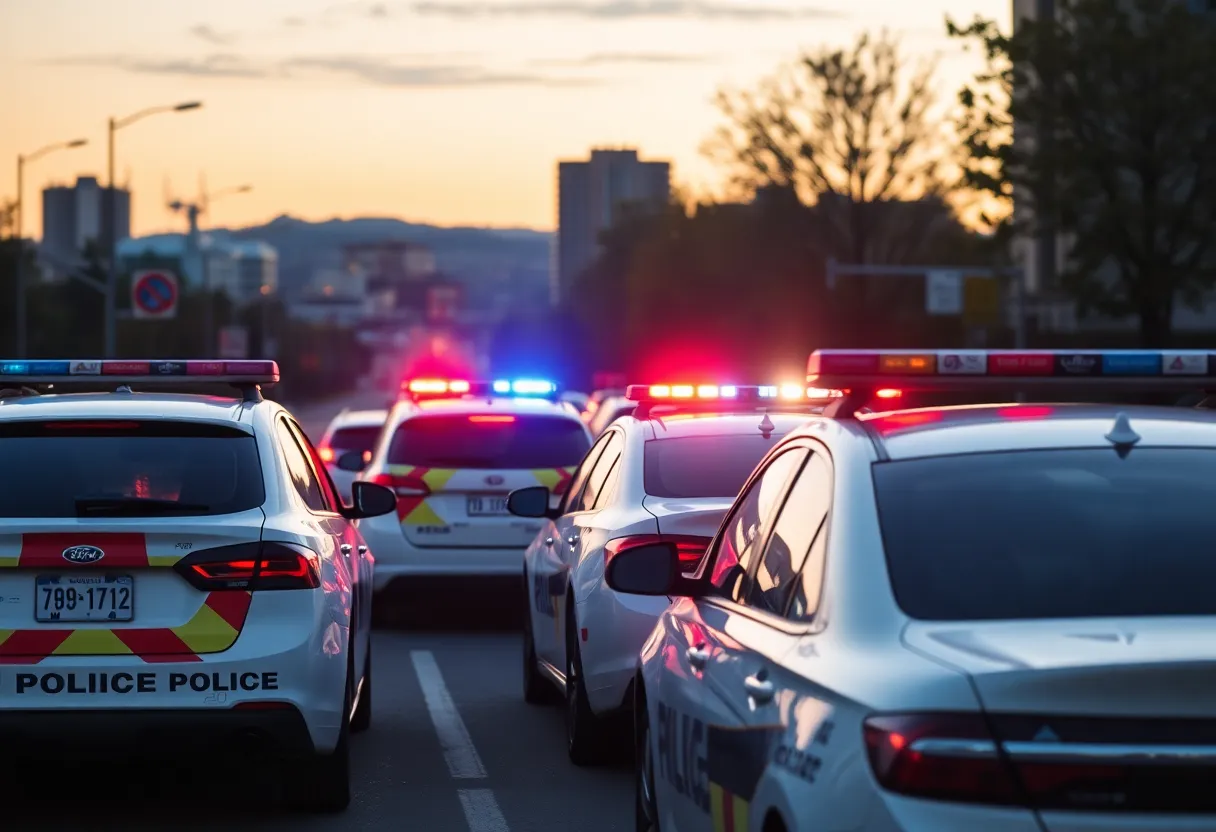Omaha, October 4, 2025
The Omaha Police Department has released a comprehensive timeline regarding a traffic stop that occurred recently, aiming to enhance community understanding and trust. The incident, recorded on body cameras, escalated after a warrant was discovered. Although no injuries were reported, the police department’s transparency initiative has led to discussions about policing practices and community relations. The full video of the encounter is now publicly accessible to promote accountability and clarity.
Omaha Police Department Releases Timeline of Recent Traffic Stop
Omaha – The Omaha Police Department has made public a detailed timeline of a traffic stop that took place on October 1, involving an officer and a driver. This release addresses community concerns by providing clarity on the events, which were captured on body camera footage. The incident began as a routine traffic check but escalated due to an outstanding warrant, though no injuries were reported.
The timeline outlines the sequence of events, emphasizing that the stop followed standard procedures. According to the released information, the escalation occurred when the warrant was discovered, leading to further actions by the officer. This development has prompted discussions among local residents about policing practices and their impact on community relations. The full video of the incident is now available for public viewing, aiming to promote transparency in law enforcement operations.
Community members have expressed interest in how such incidents are handled, with local figures encouraging ongoing conversations to foster better understanding between police and residents. The release of this information is part of efforts to clarify procedures during high-profile stops and build trust through openness.
Supporting details from the timeline show that the traffic stop was initiated for a minor violation, but the situation changed upon verification of the warrant. Officers involved acted according to established protocols, and the encounter ended without any physical harm. This has led to broader reflections on how routine interactions can sometimes intensify, highlighting the need for de-escalation techniques in everyday policing.
The Omaha Police Department’s decision to share this timeline comes amid growing calls for accountability in law enforcement. By making the body camera footage accessible, officials are providing a resource for the public to review the events firsthand. This step is seen as a way to address potential misunderstandings and demonstrate commitment to fair practices.
In the context of recent events, this traffic stop has sparked conversations about the role of warrants in police interactions. Background information indicates that warrants are legal documents issued for various reasons, such as unresolved citations or criminal matters. When encountered during a stop, they can lead to detentions or arrests, as was the case here. The department’s release emphasizes that such escalations are not uncommon but are handled with the goal of maintaining safety for all parties involved.
Historically, similar incidents in Omaha have led to community forums and reviews of police policies. This particular event, occurring just days ago, aligns with ongoing efforts to improve relations between law enforcement and the public. By releasing detailed timelines and videos, the department is working to set a standard for transparency, which could influence future interactions and training programs.
Key elements of the timeline include the initial contact, the discovery of the warrant, and the resolution of the stop. These details are presented in a straightforward manner, allowing the public to understand the sequence without speculation. This approach helps in educating residents about the challenges officers face and the steps taken to ensure lawful procedures.
The absence of injuries in this case is noteworthy, as it contrasts with other incidents that have drawn national attention. Local leaders have pointed to this as an opportunity for positive dialogue, stressing the importance of communication in preventing escalations. As a result, community groups are organizing meetings to discuss ways to enhance trust and cooperation with police.
Overall, the release of this timeline serves as a reminder of the complexities involved in policing. It provides a factual account that can inform public opinion and policy discussions. By focusing on transparency, the Omaha Police Department is taking concrete steps to address concerns and promote a safer environment for everyone.
This event underscores the value of body cameras in modern law enforcement, as they offer an objective record of interactions. The public release of such footage allows for independent review, which can help in resolving disputes and improving practices. In Omaha, this initiative is part of a larger trend toward openness, reflecting changes in how police departments operate in response to community feedback.
Moving forward, the timeline’s availability is expected to encourage more informed conversations about policing strategies. It highlights the need for clear guidelines and training to handle situations that might escalate quickly. Community involvement in these discussions could lead to recommendations for policy adjustments, ensuring that future stops are conducted with greater sensitivity and effectiveness.
In summary, the Omaha Police Department’s action demonstrates a commitment to accountability. By sharing details of the October 1 traffic stop, officials are providing tools for the public to engage constructively. This approach not only clarifies the events but also supports efforts to strengthen community-police relations through evidence-based transparency.
Background on Policing Practices
In recent years, traffic stops have been a focal point in discussions about law enforcement across the United States, with Omaha being no exception. These stops, often routine, can sometimes lead to heightened tensions if underlying issues like warrants are involved. The department’s release of this timeline is a response to such concerns, aiming to educate the public and reduce misunderstandings. This incident, captured on body cameras, adds to a growing body of evidence that supports the use of technology in policing to ensure accuracy and fairness.
The involvement of warrants in traffic stops is a common occurrence, as they require officers to take additional steps for legal compliance. In this case, the process was documented thoroughly, showing how protocols are followed to maintain order. Such transparency initiatives are increasingly important in building public confidence, particularly in urban areas like Omaha where community dynamics play a significant role in law enforcement relations.
Community leaders have long advocated for better communication channels, and this release aligns with those efforts. By making information accessible, the department is fostering an environment where residents can learn about and contribute to policing improvements. This event, though resolved without incident, serves as a case study for ongoing training and policy development.
Word count: 752
Frequently Asked Questions
- What did the Omaha Police Department release regarding the October 1 traffic stop?
- The Omaha Police Department released a detailed timeline of the October 1 traffic stop involving Officer Crawford.
- What caused the traffic stop to escalate?
- The incident escalated due to a warrant during what was initially a routine check.
- Were there any injuries during the traffic stop?
- No injuries occurred during the traffic stop.
- What has this incident led to in the community?
- It sparked community discussions on policing.
- What statement was made by the police chief?
- The police chief noted that transparency builds trust.
- Is the full video of the incident available?
- The full video is now public.
- What are community leaders advocating for?
- Community leaders call for continued dialogue to improve relations.
- What is the purpose of this release?
- This release aims to address concerns and clarify procedures in high-profile stops.
Key Features Chart
| Feature | Description |
|---|---|
| Timeline Release | Detailed timeline provided by Omaha Police Department for the October 1 traffic stop. |
Deeper Dive: News & Info About This TopicHERE ResourcesTraffic Stop Involving Boxing Champion Prompts Community Discussion Author: HERE OMAHAHERE OMAHA
Advertising Opportunity:
Stay ConnectedMore Updates University of Nebraska Medical Center Unveils New Simulation LabOmaha, October 27, 2025 The University of Nebraska Medical Center in Omaha has launched a new $5 million simulation lab aimed at enhancing medical training for
October 27, 2025
 Creighton Men’s Basketball Dominates Colorado State in Exhibition GameOmaha, NE, October 27, 2025 Creighton University’s men’s basketball team showcased their skills with a 78-65 win over Colorado State in an exhibition match held at
October 27, 2025
 Nebraska Men’s Basketball Welcomes New Assistant CoachLincoln, NE, October 27, 2025 The University of Nebraska men’s basketball team has hired Marcus Thompson as an assistant coach to enhance their coaching staff for
October 27, 2025
Would You Like To Add Your Business?Sign Up Now and get your local business listed! |


